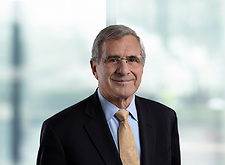Governor Cuomo Orders Reporting Certain Medical Equipment Located in New York State to the Department of Health for Redistribution
During a press conference on April 3, 2020, New York Governor Andrew Cuomo announced that the National Guard would be called upon to collect “excess” personal protective equipment (“PPE”) and ventilators from hospitals and other institutions for use where they are more urgently needed due to the COVID-19 pandemic. Following significant outcry from politicians across the political spectrum, the Executive Order to implement this policy was delayed.
On April 7, Executive Order 202.14 was finally issued. Among other things, the Order allows the New York Department of Health (“DOH”) to “shift” ventilators, PPE, and certain other medical equipment and supplies located in New York and redistribute them to health care facilities where there is an immediate need. The redistributed items would be later returned or reimbursed.
Under the Order, any medical equipment that is held in inventory by any entity in the State, or otherwise located in the State must be reported to DOH. Notably, there is no specific timeframe given in the Order for submittal of the required report, although the directive is in effect through May 7. Nor is the form of submittal addressed, but previous Executive Orders have been followed by guidance from the involved agencies on how those orders are to be implemented.
The Order also permits DOH to “shift” medical equipment it deems “not currently needed, or needed in the short term future by a health care facility,” to other facilities DOH deems “in urgent need.” The Order’s stated purpose is to ensure “New York hospitals, facilities and health care workers have the resources necessary to respond to the COVID-19 pandemic, and distribute them where there is an immediate need.”
Under the Order, DOH must either return the transferred inventory “as soon as no longer urgently needed and/or, in consultation with the Division of the Budget, ensure compensation is paid for any goods or materials acquired at the rates prevailing in the market at the time of acquisition.” DOH will promulgate guidance for businesses and individuals seeking payment. The Order suggests compensation would only be available if the equipment is not returned at the end of use, but there is no discussion of compensation for the State’s use of the equipment when it was unavailable to the owner.
Medical equipment and supplies subject to the Order include:
- personal protective equipment (PPE)
- ventilators
- respirators
- bi-pap equipment
- anesthesia
- other necessary equipment or supplies as determined by the Commissioner of Health
During his April 3 press conference, Governor Cuomo said there are hospitals that have ventilators and PPE that “we are going to re-deploy to the places and the hospitals where we need them.” He noted that hospital administrators are generally unwilling to give up their ventilators because ventilators are expensive equipment. He stated that, “the theory is if the government gets them, they will never get them back. But I don’t have an option.”
Governor Cuomo underscored the seriousness of his re-deployment initiative by saying, “I’m not going to get into a situation where we know we are running out of ventilators, and we could have people dying because there are no ventilators, but there are hospitals in other parts of the State that have ventilators that they are not using…”
Although Governor Cuomo did not specifically say that upstate hospitals and other upstate institutions could be disproportionately targeted, the statements during the April 3 press conference strongly suggest that the Order could largely affect hospitals, institutions, and private practices in areas outside of New York City -- the current epicenter of the epidemic. After significant pushback from elected officials across the State, Governor Cuomo took a softer tone at his April 4 and April 5 press conferences, noting that he has been, and would continue to be, communicating with hospitals and asking for their assistance.
Executive Order 202.14 will be effective through May 7, 2020. It also continued the suspensions and modifications of law, and any directives, not superseded by a subsequent directive, made by Executive Order 202 and each successor Executive Order to 202, until May 7, 2020.
CONTACT US
Please contact Christine Bonaguide (716.848.1325) or Roopa Chakkappan (716.848.1258) if you need guidance complying with Executive Order 202.14, including preparing the required report to DOH or navigating the compensation process.
Featured
- Partner
- Partner
- Partner
- Partner
- Partner
- Partner
- Partner
- Partner
- Partner
- Partner
- Partner











